I reached Odisha just before the Grand Festival of Rath Yatra, full of enthusiasm and reverence. With this, striding through the narrow lanes, I sensed a sanctity that emerges when one comes to the actual vantage point. The streets were full of people radiating their devotion.
Everywhere I looked, there were faces of people brimming with hope and faith, patiently waiting for a darshan of the splendid Ratha of Lord Jagannath.
With every step I took, I saw the vibrant colors of the festival dazzled my eyes. The fragrance of incense filled the air while happy voices sang hymns of worship. Everything was mind-boggling.
As I stood there, I felt great respect for the Lord and the magic of this traditional celebration. One feels divinity in oneself for a moment in the Lord’s presence.
The joyous spirit of Rath Yatra was etched in my memory and I could not stop myself from sharing my experience of the Ratha Yatra Festival. So, this blog post will take you to a different world full of harmonious symphonies of devotion.
Here I am going to share with you the best highlights of my experience at the Rath Yatra Festival.
- Entry Fee: No entry fee
- Temple Timing: 5:30 am – 9:00 pm
Legend of Ratha Yatra
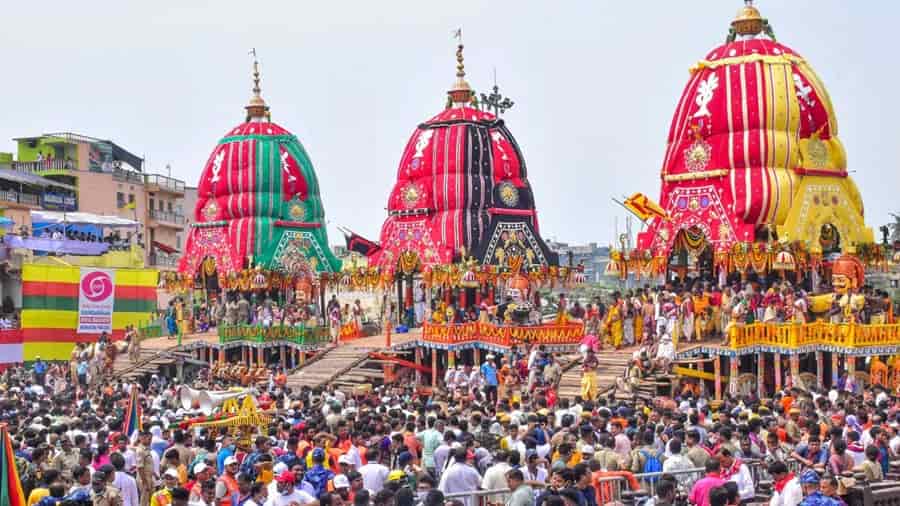
Today, I will let you know everything that you wanted to know about one of the most fascinating festivals, Rath Yatra. Celebrated in the Hindu calendar months of Ashadha and Jyeshtha, the festival has been mentioned in the Brahma Purana, Padma Purana, Skanda Purana, and the Kapila Samhita; these scriptures explain that Lord Jagannath, his elder brother Balabhadra and their sister Subhadra are inseparable companions.
According to tradition, Subhadra said to her brothers, ‘Oh brothers, I wish to go to the holy city of Puri.’ Thus, Lord Jagannath was pleased and decided to grant her wish, with Balabhadra also seated with him on the divine chariot, they left to satisfy Subhadra’s desire.
This journey, which they undertake once a year as a tradition whereby they come out of their temple dwelling to what they regard as their aunt’s shrine, has however defined this journey a sacred possession. It is a narrative that is full of warmth, embracing the bond between siblings and cherished annually with utmost respect.
I heard ‘Jai Jagannath Haribola’
The Rath Yatra Festival was a joy to behold; it was satisfying to not only the eyes but also the soul. My eyes were Instantly drawn to the grand and bright red chariot with unique engravings signifying stories of passion and responsibility of preserving their customs and cultures.
The crowd of happy people made this atmosphere surprisingly pleasing. The chariot they displayed was an extravagant icon that represented the community’s strong religious belief. There was a fresh and clean breeze blowing with the smell of flowers and burning incense making the environment very appropriate for such an energetic event.
The sound of drums and the chanting of ‘Jai Jagannath Haribola’ had a sweet ringing in my ears. I realized that it was the best feeling ever to be able to watch such a marvelous spectacle.
What stories have I Heard from Jagannath Puri Temple?
For a moment, the archaic marbles of Jagannath Puri Temple took my breath away. The temple has many tales, timeless as time itself. Here, I came to know of Kansa’s trick to lure Lord Krishna and Balram to Mathura through an invitational chariot with all the opulence.
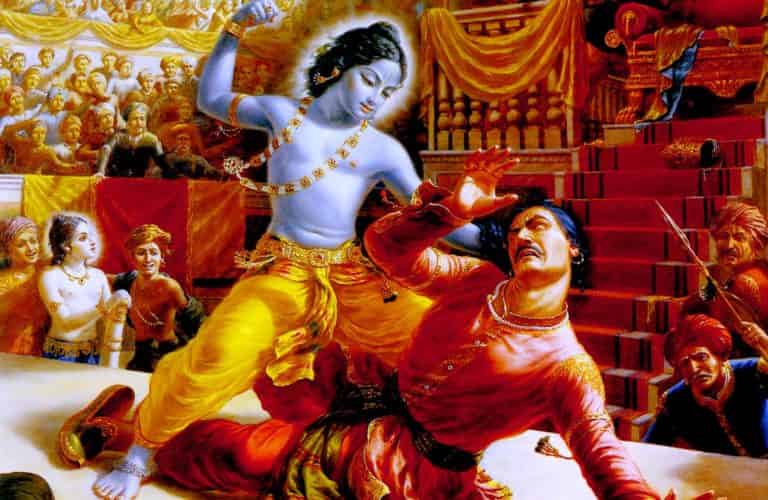
It also defined the beginning of Rath Yatra, a joyous festival associated with their patronage and perpetual residency in Mathura, a sentiment dear to devotees.
Then there is the story where Narad Muni met Lord Krishna, Balarama and Subhadra. Overwhelmed by their divine presence, Narad sought for their blessings by offering prayers for the eternal sight of them.
Thankfully, this prayer was answered and both the siblings chose to spend their eternal life in Jagannath Puri Temple, providing spiritual comfort for everyone.
In the sacred Jagannath Puri Temple I found the unity and devotion embodied by Lord Krishna, Balarama, and Subhadra. Belonging to the top five sanctuaries of India together with Rameshwar, Dwarka and Badrinath, the temple symbolizes eternal love and togetherness.
Here, they’re forever intertwined, echoing the beauty of love that will be cherished by millions of devotees who continue to visit this temple in search of blessings and fulfillment.
Sacred Rituals of Ratha Yatra
But as curious as it may sound, I have always been interested in the Rath Yatra festival. I have read a lot about it.
As per the Skanda Purana this Ratha Yatra or Shree Gundicha Yatra has been considered one of the twelve major yatras conducted with reference to Lord Jagannath.
People believe that if one sees the four seated deities on the Simhasana or the royal throne of the Gundicha Temple for one week, then, the person along with their ancestors will get salvation and be sent to the heavenly world- Vaikuntha forever.
The Ratha Yatra, which is celebrated on the second day of the bright fortnight of the Ashada month, is held for the welfare of all mankind. However, it is a pious adventure where the deities Lord Jagannath, Lord Balabhadra, Devi Subhadra, and Lord Sudarshana shower their divine blessings upon the entire world to provide grace and blessings to the entire creation.
The Revered Chandana Yatra
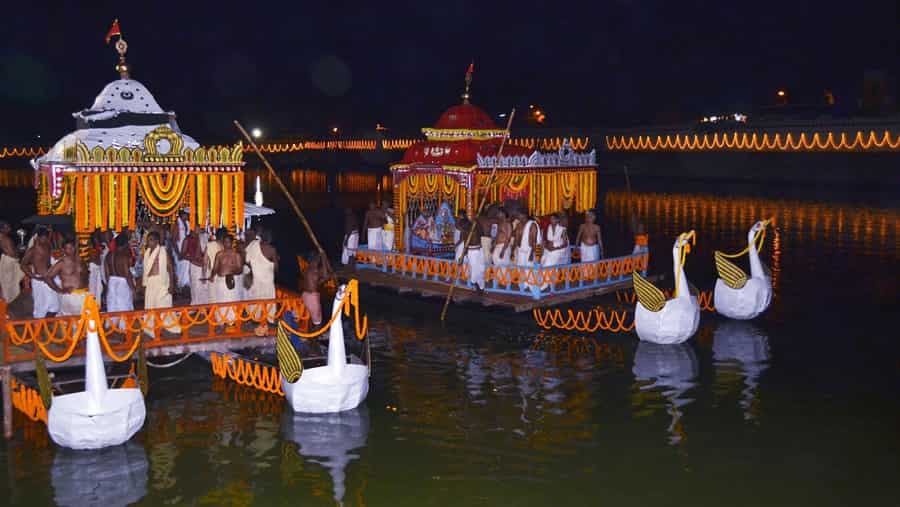
Coming to Puri prior to Rath Yatra, I got the opportunity of seeing the hard work being put into constructing three gigantic wooden chariots for the deities. Beginning the event on Akshaya Tritiya with sacred fire rites signified the onset of a symbolic journey – The Chandana Yatra.
Blessed by the devotees, it was with supreme craftsmanship that Neem wood, the purest of all woods, was carved into ornate chariots. I could see how dedicated the artisans are as they understood that after Rath Yatra, these chariots would be converted into blessed Prasadam, thereby continuing to serve a divine purpose but in a different manner.
Awe- Inspiring Snana Yatra
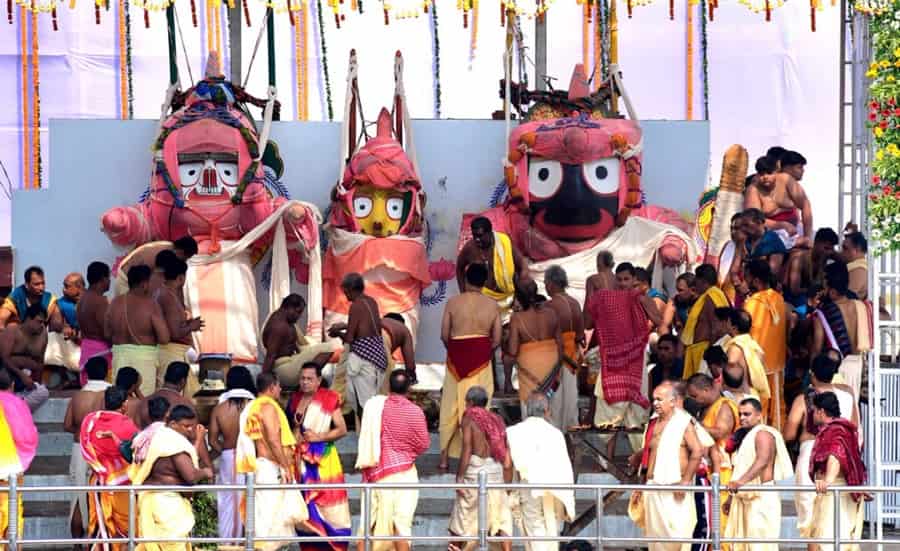
It was my chance to observe one of the most revered festival processions known as Snana Yatra right before Rath Yatra in Puri. The Pahandi procession gracefully moved Lord Jagannath, Balabhadra, and Devi Subhadra to their bathing stand.
It was a stunning picture to behold as 108 pitchers of aromatic and herbal water were poured on the deities; all selected on the basis of their purity.
This ceremonial bath that relied on the water from the golden well (Suna Kua), signified the washing away of sin and awakening of the Gods.
Netrotsava- the ‘Festival of the Eyes
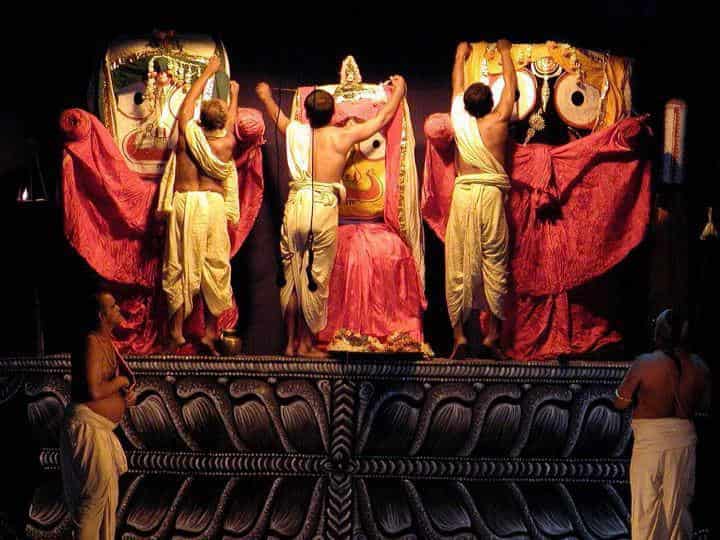
A day before the Rath Yatra, the spiritual preparation takes place in Puri called the Netrotsava- the ‘Festival of the Eyes’- which symbolizes the awakening, the rebirth of the deities and it is the day when the eyes of the idols are painted. It means the beginning of their preparation for their journey and reviving the spirits of devotees with faith and happiness.
Even today within the confines of the Jagannath Temple while the smell of burning incense hangs heavy in the air, and the lamps burning at the altar are giving off a faint light, the artists of Pattachitra begin to paint the eyes of the Lord Jagannath, Lord Balabhadra, and Devi Subhadra anew.
Every stroke of the brush is very meaningful as it not only gives new life to the image of the deities but at the same time rejuvenates godly vision and saves intervention for the viewers.
Throughout the ceremony, one is expected to hear prayers and hymns. People come forward with faith, observing this divine moment that makes them feel closer to the divine aspect of Rath Yatra.
Netrotsava as a symbol depicts the process of regeneration and dedication of hearts and souls for the grand event of Rath Yatra to embrace divine blessings of Lord Jagannath.
Mangalarpana Ritual
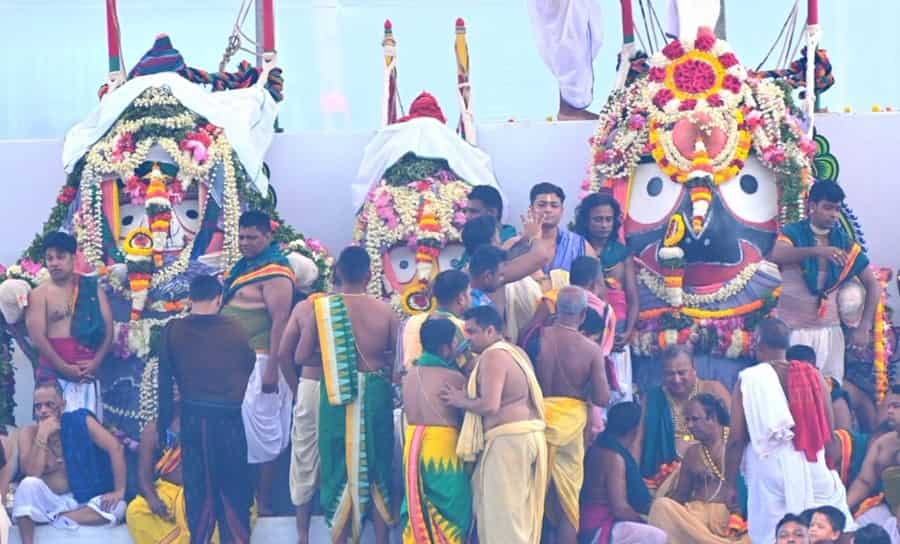
Following Mangal Alati, Abakash, and the Khechdi Bhog offering to the deity on the second day of Ashada Shukla Tithi, the air is filled with excitement as the Mangalarpana procession begins. Each in a grand and ritualistic manner, the four gods—Sudarshana, Balabhadra, Subhadra and Jagannath step into their respective rathes or chariots.
I witnessed each deity’s ceremonial possession, their divine presence palpable as they gracefully mounted their designated chariots: It consists of four deities, firstly Lord Sudarshana, secondly Lord Balabhadra, Devi Subhadra and last and the Lord Jagannath.
Witnessing this sacred event, I saw how the Mahajana’s servitors placed the Beje Pratimas that would act as proxy gods.
All the proxies of revered gods such as Rama and Krishna were strategically placed on the respective chariots. There was the silence of purity, and the sense of devotion, which makes the entirety of Rath Yatra so elaborate.
The Views of the Chariots
The Lord Jagannath’ s chariot Nandighosa was absolutely massive. It had 16 wheels and when looking at it, you could barely see it touching the ground due to the red and yellow canopies that were swaying in the wind.
It was still early morning, but the air was filled with the excitement and work ethic of artisans applying the last details to their brightly lit-work, glittering under the sun.
Beside it was Taladhwaja, the chariot of Lord Balabhadra, a little smaller in size though, in no way less grand. Having fourteen wheels and a height of 43 feet it’s canopies were painted with deep blue and red colors. I could see intricate carving around the windows, and the walls were painted to symbolize dignity and honor.
And not to be left behind, Goddess Subhadra’s own chariot, known as Darpadalana, was standing nearby. The smallest of the three, and measured forty-two feet in length, it had 12 wheels with black and red mica canopies. For its small appearance, it was no less intimidating, proving the impressive power of the divine feminine energy within the festival.
Chhera Panhara
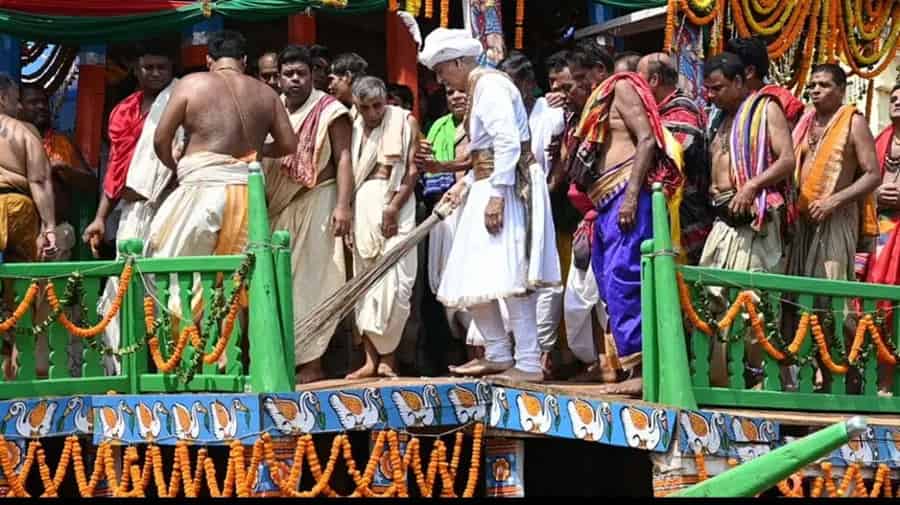
Once again watching the deities coming into the chariots and being decorated with Malachula and besha, I shifted my concentration to the Chhera Panhara ceremony which is of great significance during Rath Yatra in Odisha only.
This rite, literally translated as ‘sweeping with water and holy water sprinkling’, is performed by the Gajapati Maharaja, the king of Odisha. The Gajapati Maharaja moving in a ceremonial carrier from the Shreenahara (King’s palace) dressed in royal outfit specially to do this religious act.
In an equally pious gesture, the Gajapati Maharaja then bows and performs the puja offering a camphor lamp in a golden Diya signifying purity and the light of divinity to the gods. Subsequently, rituals of Alata – red paste application and Chamara with fans are done.
Thereafter, holding a golden broom, the king bends and moves around the circles sweeping the floor of the chariot – an emblem of purification from evils and humility in the divine presence. Sandalwood paste is gently put on afterwards and the chariots are further anointed to signify their holy parade within the city.
This act itself represents the devotion and homage of the Gajapati Maharaja towards Lord Jagannath but at the same time the celebration also tends to underscore the age-old historical and religious importance of Rath Yatra in the Oriya culture.
In Puri, especially during the Rath Yatra festival day, one can feel the air is charged and people are filled with great reverence. Conch shells are blown, drums are beaten, bells ring and roll as the holy trinity of Lord Jagannath, Lord Balabhadra and Devi Subhadra come out of the Jagannath Temple.
Several thousands of pilgrims are gathering to see this holy parade, embraced by their beliefs and cultural values.
Practical Travel Guide to embrace Ratha Yatra Festival
Dates of Jagannath Puri Temple 2025
The dates of the Jagannath Puri Rath Yatra Festival differ from year to year. Mentioned here are the dates for Ratha Yatra 2025
| Snana Yatra | 22nd June 2025 | Spiritual cleansing of the deities with aromatic water.
|
| Ratha Yatra | 7th July 2025 | The grand possession of the deities with decorated chariots, Lord Jagannath’s arrival to his aunt’s temple.
|
| Bahuda Yatra | 15th July 2025 | Return Journey of the Deities to the Jagannath Temple for a special ritual called Suna Vesa (Golden attire).
|
| Suna Besha | 16th July 2025 | See the gold ornaments of the deities, the attire of the deities is a spectacle to behold.
|
| Adhara Pana | 18th July 2025 | A drink called Adhara Pana offered to the deities to rejuvenate their divine forms.
|
| Niladri Bije | 19th July 2025 | End of Rath Yatra, Deities return to the holy Jagannath Temple.
|
How to Reach Puri
By air: The next nearest airport is situated in Bhubaneswar which is just 60 kms away from Puri and the main airways connecting to it are Mumbai, Kolkata, Pune, Chennai, and Delhi. If you are arriving from Bhubaneswar Airport, you can take a two-hour taxi or bus journey comfortably to Puri.
By train: Puri also has its own railway station but is also well connected to Mumbai, Kolkata and New Delhi through direct trains.
By road: It is easily accessible by buses from Bhubaneswar to Cuttack and then to Puri, or by a personal car from Bhubaneswar because, believe it or not, the roads are worth watching on the way to Puri.)
Do’s:
- Select the hotel or the lodge within the vicinity of the temple so as to cut down travel duration in Puri.
- Get to the venue as early as 6-7 AM in the morning to get the best view of the proceedings.
Don’ts:
- While in a group do not over order the food from one place or organize Prasad from a temple for all the people. Pay in cash at every eating place.
- Never put money and mobile phones and other valuable items into the bead bags or money belts because these may catch the eye of local thieves.
- Safety should be top-notch especially when going out during the celebrations and this can be achieved by not going out alone in big crowds.
Near the time of procession, I was standing among thousands of people who dreamt of being able to pull such sacred chariots. Taking the long ropes, I could almost sense a comradeship and determination as we positioned ourselves to start the wheels of tradition. The chants and the prayers of the congregation filled the air together with the ringing of bells and the beating of drums to signify the beginning of this holy pilgrimage.
FAQ
1- What is the reason behind Jagannath Yatra?
Jagannath Yatra or Rath Yatra is one of the most important and widespread religious pilgrimages in honor of Lord Jagannath, the god who is considered as the tenth avatar of Lord Vishnu. The festival signifies the ride on chariots of Lord Jagannath, brother Balabhadra and sister Subhadra once in a year from the temple of Lord Jagannath till the Gundicha temple nearly two and half kilometers away. This journey represents the homecoming of Lord Jagannath to his place of birth. It is a period of great joy and worship, attended by millions of people from different parts of the world.
2- Who is Jagannath God?
Lord Jagannath is an important deity worshiped in India especially in Odisha. It is believed that he is an incarnation of Lord Krishna which is an avatar of Lord Vishnu. The god Jagannath has round and big eyes and is usually smiling, thus, the god is always portrayed as an all-seeing and merciful one. He is worshiped with his brother Balabhadra (an incarnation of Lord Balarama) and sister Subhadra. They are the main deities of the temple of Jagannath at Puri.
3- What is the spiritual meaning of Rath Yatra?
The Rath Yatra holds deep spiritual significance for devotees. The significance of the journey of Rath Yatra is that it’s a soul’s journey towards enlightenment and liberation. The festival highlights the concept of unity and equality. During the celebration of the festival, people of all ranks and ages work together to pull the chariots, and the idea is that everyone is equal and only collectively can they achieve the goal of reaching divinity. The act of pulling the chariots is believed to bestow blessings and purify the devotees’ souls.
4- What is the name of Three Ratha?
The three chariots used in the Rath Yatra are named after the deities they carry:
- Nandighosa: The chariot of Lord Jagannath. It’s the biggest chariot of 16 wheels.
- Taladhwaja- The chariot of Lord Balabhadra. It has 14 wheels
- Darpadalana (also known as Devadalana or Padmadhwaja): The chariot of Goddess Subhadra. It is the smallest Chariot of 12 wheels.
5- What is the theme of Rath Yatra?
The central theme of the Rath Yatra revolves around the journey of Lord Jagannath, his brother Balabhadra, and his sister Subhadra to the Gundicha Temple. They come to their Aunt’s home from Jagannath Puri and shower blessings on devotees. The festival is a display of devotion, culture and community spirit. People of all castes and professions come together to give true service and compassion. It also emphasizes the importance of humility, service, and unity among people.
I hope that my experiences will inspire you to see the Grand Festival of Ratha Yatra this year. It is indeed one of the most beautiful and colorful festivals of Odisha.

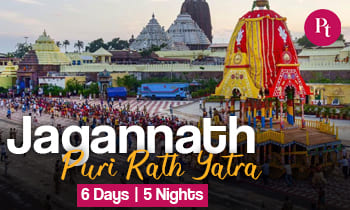
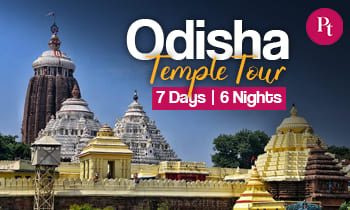
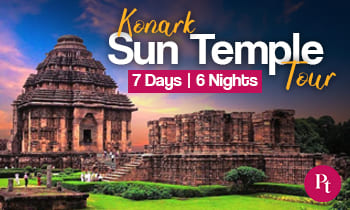
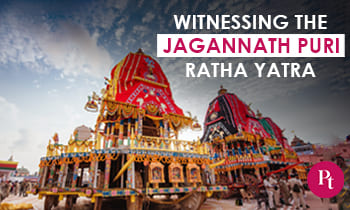
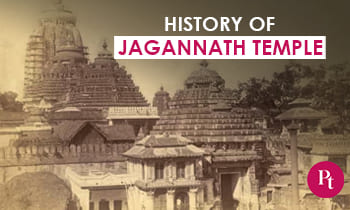
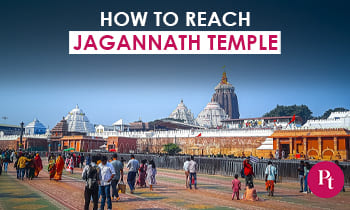
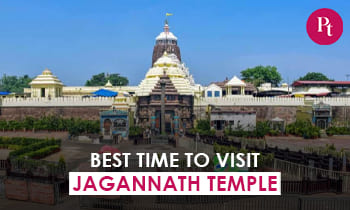

 Call
Call WhatsApp
WhatsApp Enquiry
Enquiry